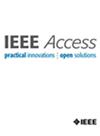Handwritten Amharic Character Recognition Through Transfer Learning: Integrating CNN Models and Machine Learning Classifiers
IF 3.4
3区 计算机科学
Q2 COMPUTER SCIENCE, INFORMATION SYSTEMS
引用次数: 0
Abstract
Handwritten Amharic character recognition presents significant challenges due to the script’s syllabic nature and variations in handwriting styles. This study investigates a hybrid approach that integrates convolutional neural networks (CNNs) with machine learning classifiers to enhance recognition accuracy. Transfer learning is applied using four CNN architectures: AlexNet, VGG16, VGG19, and ResNet50 as feature extractors. Initially, their performance is evaluated with softmax classifiers. Subsequently, the softmax layer is replaced with machine learning classifiers, including Random Forest, XGBoost, and Support Vector Machine (SVM), while freezing the pretrained feature extractors. The Hybrid ResNet50 + SVM model achieves the highest accuracy of 91.89%, with a precision of 92.46%, recall of 91.15%, and an F1-score of 91.80%. These results indicate that SVM serves as a potential alternative to softmax, offering robust classification performance for complex handwritten scripts. This research contributes to advancements in handwritten character recognition systems for underrepresented languages.求助全文
约1分钟内获得全文
求助全文
来源期刊

IEEE Access
COMPUTER SCIENCE, INFORMATION SYSTEMSENGIN-ENGINEERING, ELECTRICAL & ELECTRONIC
CiteScore
9.80
自引率
7.70%
发文量
6673
审稿时长
6 weeks
期刊介绍:
IEEE Access® is a multidisciplinary, open access (OA), applications-oriented, all-electronic archival journal that continuously presents the results of original research or development across all of IEEE''s fields of interest.
IEEE Access will publish articles that are of high interest to readers, original, technically correct, and clearly presented. Supported by author publication charges (APC), its hallmarks are a rapid peer review and publication process with open access to all readers. Unlike IEEE''s traditional Transactions or Journals, reviews are "binary", in that reviewers will either Accept or Reject an article in the form it is submitted in order to achieve rapid turnaround. Especially encouraged are submissions on:
Multidisciplinary topics, or applications-oriented articles and negative results that do not fit within the scope of IEEE''s traditional journals.
Practical articles discussing new experiments or measurement techniques, interesting solutions to engineering.
Development of new or improved fabrication or manufacturing techniques.
Reviews or survey articles of new or evolving fields oriented to assist others in understanding the new area.
 求助内容:
求助内容: 应助结果提醒方式:
应助结果提醒方式:


